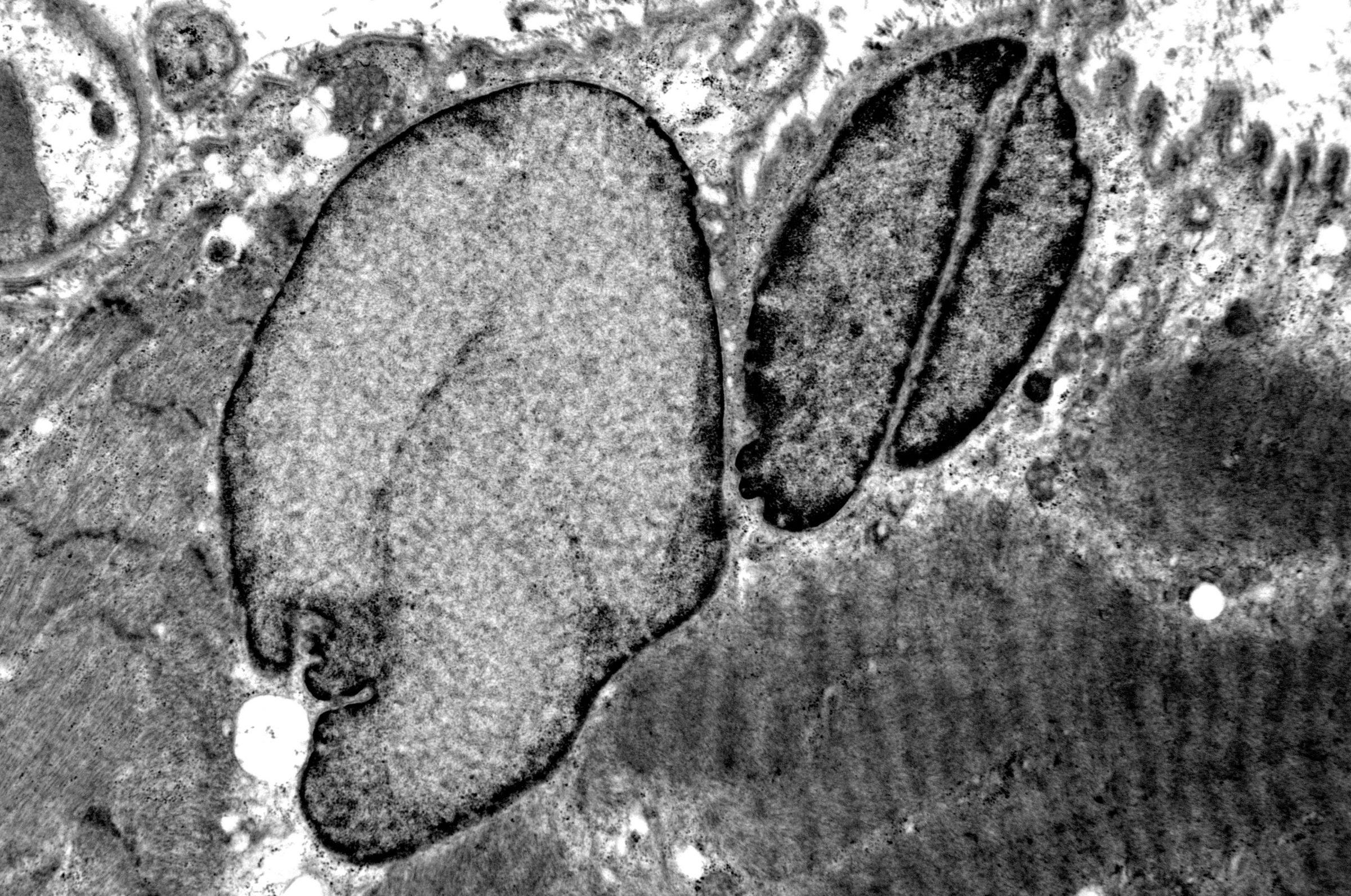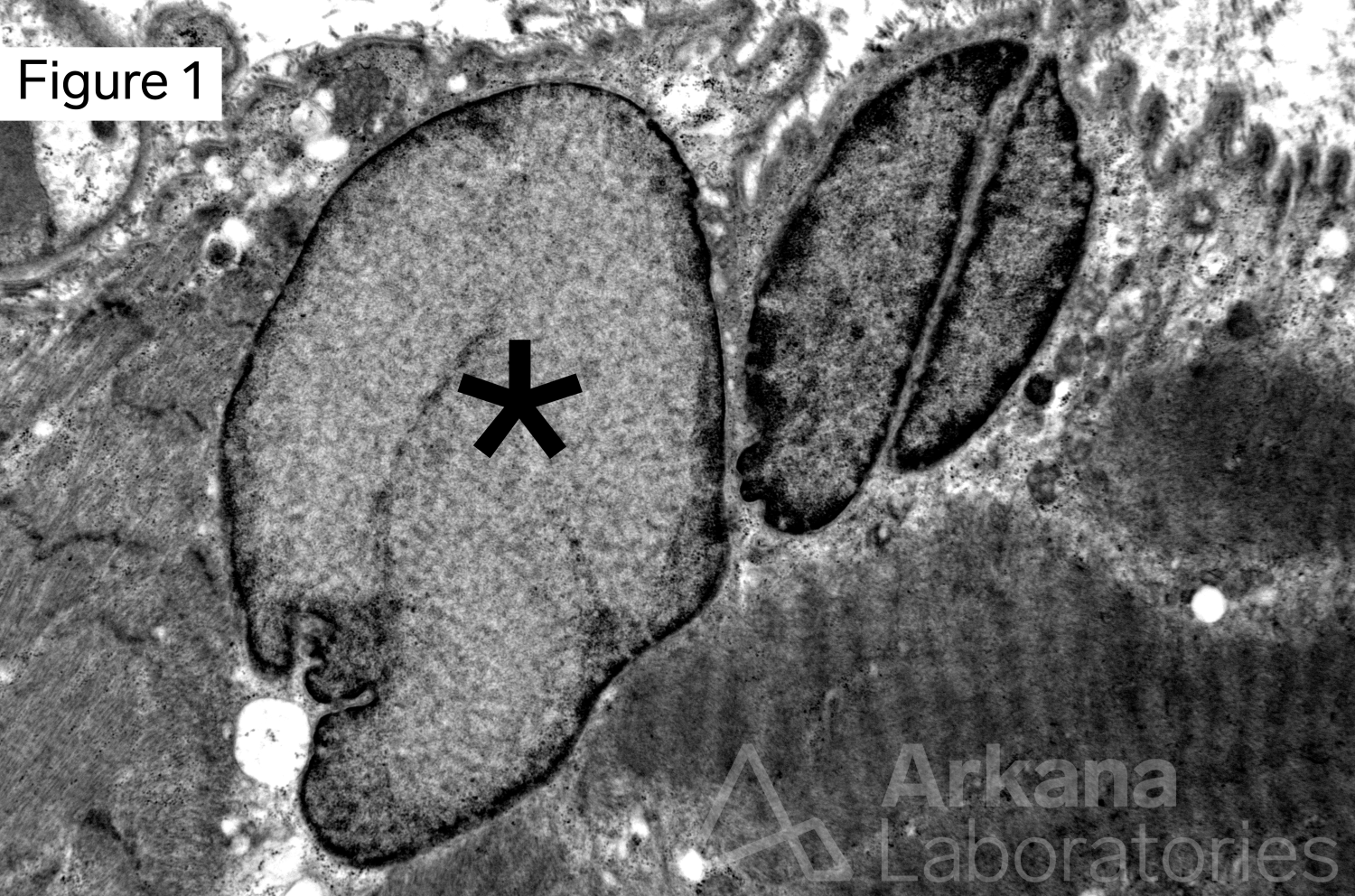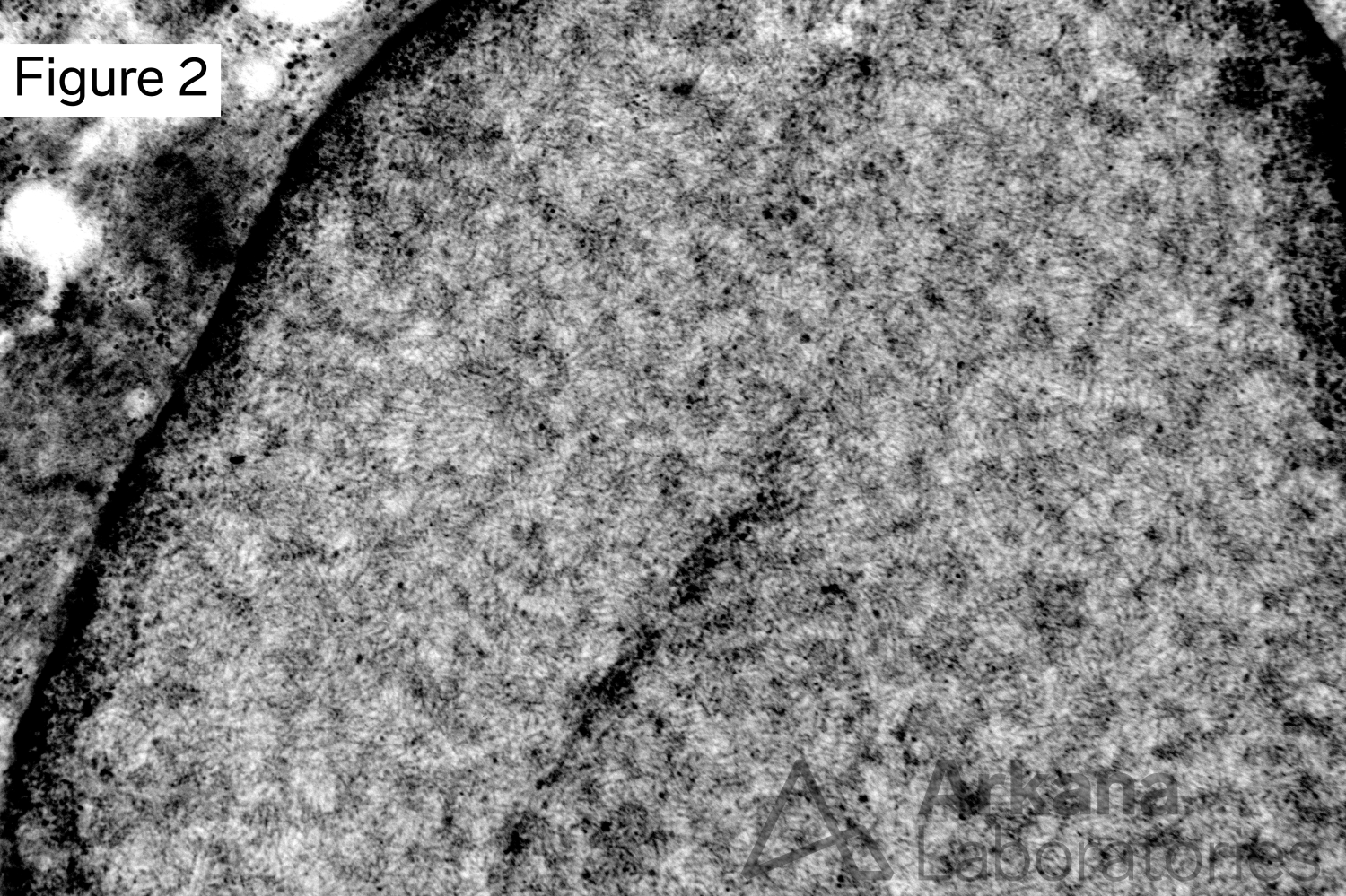This 60-year-old patient initially presented with facial weakness, and subsequently developed ptosis and dysphonia. More recently they noticed difficulty rising from a chair (proximal lower extremity weakness). Multiple family have had similar symptoms. Laboratory studies showed mild elevation of CPK. EMG demonstrated myopathic features predominantly in proximal lower extremity muscles. Mild non-inflammatory myopathic changes and occasional muscle fibers with rimmed vacuoles were present on muscle biopsy.
Based on Figures #1 and #2 which of the following tests should be recommended?
A. anti-IBM (cn-1A / NT5c1A)
B. Anti-synthetase autoantibodies
C. ANA
D. PABPN1 GCN repeat testing
Answer: PABPN1 GCN repeat testing
The ultrastructural images demonstrate the presence of finely fibrillary (~8.5nm thickness) material within the nucleus characteristic of Oculopharyngeal Muscular Dystrophy (OPMD) due to trinucleotide repeat expansion (poly-alanine) in the PABPN1 gene. The fibrillary inclusion material is finer than the amyloid-like intranuclear or intrasarcoplasmic material seen in sporadic Inclusion Body Myositis (sIBM).
Of note: sporadic Inclusion Body Myositis (sIBM) is not the only muscle disease to show rimmed-vacuoles.
Reference(s) / additional reading:
Trollet C, Boulinguiez A, Roth F, Stojkovic T, Butler-Browne G, Evangelista T, Lacau St Guily J, Richard P. Oculopharyngeal Muscular Dystrophy. 2001 Mar 8 [updated 2020 Oct 22]. In: Adam MP, Mirzaa GM, Pagon RA, Wallace SE, Bean LJH, Gripp KW, Amemiya A, editors. GeneReviews®[Internet]. Seattle (WA): University of Washington, Seattle; 1993–2022. PMID: 20301305.
Richard P, Trollet C, Gidaro T, Demay L, Brochier G, Malfatti E, Tom FM, Fardeau M, Lafor P, Romero N, Martin-N ML, Sol G, Ferrer-Monasterio X, Saint-Guily JL, Eymard B. PABPN1 (GCN)11 as a Dominant Allele in Oculopharyngeal Muscular Dystrophy -Consequences in Clinical Diagnosis and Genetic Counselling. J Neuromuscul Dis. 2015 Jun 4;2(2):175-180. doi: 10.3233/JND-140060. PMID: 27858728; PMCID: PMC5271460.
Richard P, Trollet C, Stojkovic T, de Becdelievre A, Perie S, Pouget J, Eymard B; Neurologists of French Neuromuscular Reference Centers CORNEMUS and FILNEMUS. Correlation between PABPN1 genotype and disease severity in oculopharyngeal muscular dystrophy. Neurology. 2017 Jan 24;88(4):359-365. doi: 10.1212/WNL.0000000000003554. Epub 2016 Dec 23. PMID: 28011929; PMCID: PMC5272966.
Yamashita S. Recent Progress in Oculopharyngeal Muscular Dystrophy. J Clin Med. 2021 Mar 29;10(7):1375. doi: 10.3390/jcm10071375. PMID: 33805441; PMCID: PMC8036457.
https://www.mda.org/disease/oculopharyngeal-muscular-dystrophy
Quick note: This post is to be used for informational purposes only and does not constitute medical or health advice. Each person should consult their own doctor with respect to matters referenced. Arkana Laboratories assumes no liability for actions taken in reliance upon the information contained herein.




